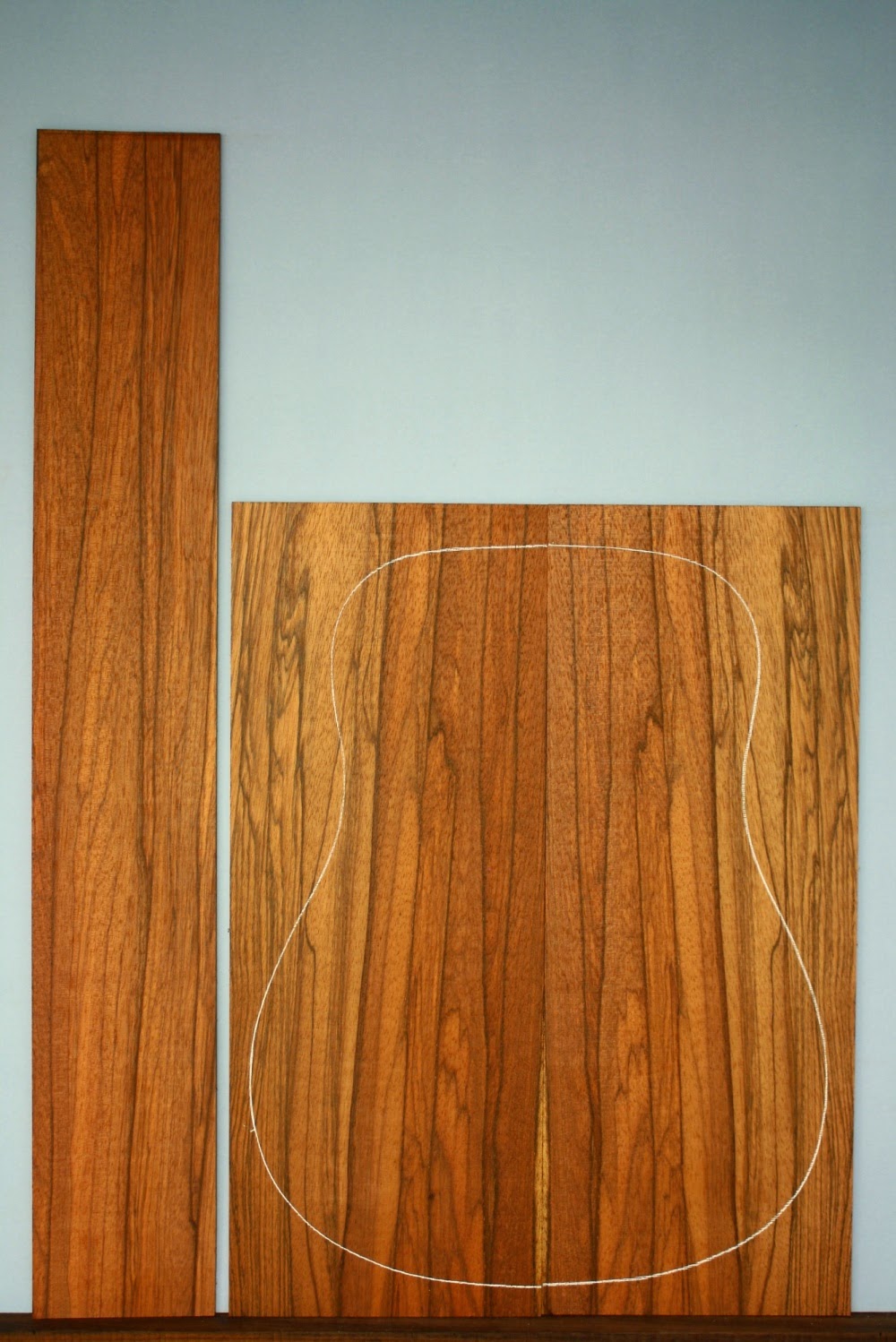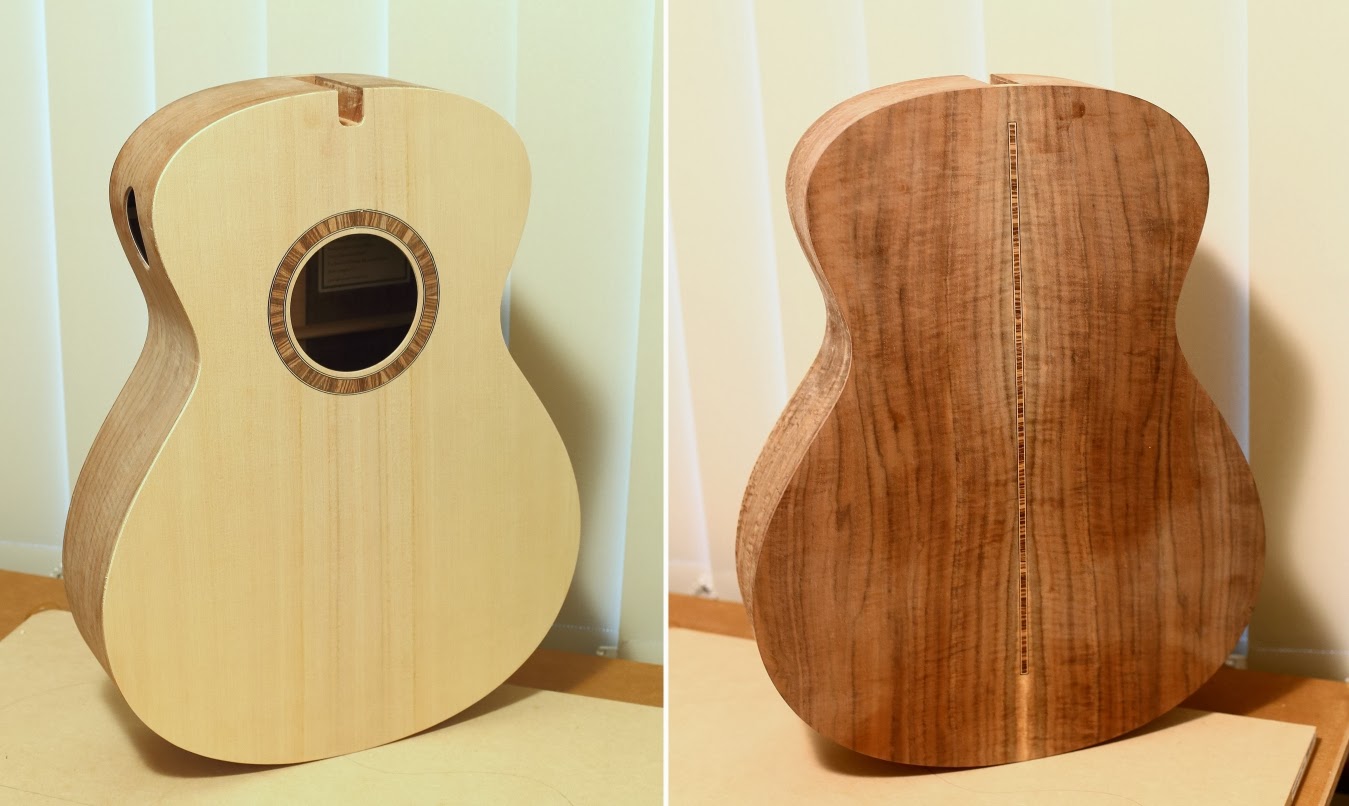As I look forward to resuming work on the three guitars I'm currently constructing, it's sobering to reflect on my guitar building progress so far, and just how long it's taken me to get where I am. It's timely to do so given that I've at last attained a level of confidence that will allow me to offer my instruments for sale. I sold a few of my early efforts many years ago, but like so many beginning builders, I was probably too eager to do so, not quite comprehending the risks involved and the potential for conflict with disgruntled customers. Fortunately, those guitars haven't returned to haunt me; in fact, one of those old customers contacted me not so long ago to tell me he how much he still loves the guitar I built him. What a pleasant surprise!
"I can see the progress you have made in the time
elapsed since creating my guitar but there's still no denying what a great little
instrument my guitar is - I am still trying to do it justice with my playing -
which has not progressed on parallel terms with your luthier skills. I would
not hesitate to recommend any player interested in a custom guitar to you and
if I thought you were willing to take orders for sales I would be very happy to
be more proactive in that regard."
Finding a finish material I could apply safely and to a satisfactory standard has been a hurdle I feel I've at last negotiated, and as I look ahead with visions of reducing the hours I spend in a "normal" job, I have high hopes that the sale of my guitars can at least supplement my income and give me a creative outlet.
I first became interested in guitar building in the mid 1980s, but in those pre-internet days here in Australia, I found it almost impossible to accumulate the knowledge I craved, let alone locate anyone who could pass on their skills in person. I can't remember how, but at some point I managed to find a copy of Irving Sloane's book "Classical Guitar Construction" which I read and re-read many times over. Shortly thereafter, while backpacking through Canada, I was excited to spy Tom and Mary Evans book, "Guitars: From the Renaissance to Rock" which, although short on information relating specifically to guitar construction techniques, was a worthy addition to my sparse reference library.
Quite by accident, as I explored Vancouver I came across Richard's Rare Guitars, where a staff member was kind enough to phone Jean Larivee and seek permission for me to visit his North Vancouver workshop which was within easy walking distance. I found Jean very welcoming, and he was good enough to allow me to sort through an enormous pile of Sitka Spruce soundboards at the front of his shop. My backpacker's budget was pretty tight, but I selected five tops (at $25 each from memory!), not really knowing what features I should be looking for, but feeling incredibly excited to have at last found the materials that would help me get started on what has turned out to be a protracted self-imposed apprenticeship. Between the Spruce tops and the books I bought in Canada, I was quite heavily laden for the remainder of my overseas trip!
Fast forward to today, and the wealth of books, online resources and lutherie schools is overwhelming - I guess I was born too early. I feel incredibly lucky to have an interest in common with so many other individuals who so generously share their skills, knowledge and techniques. The online community, including the various guitar forums, is a fantastic resource both as an opportunity to learn from others, and as a means of sharing our creations.
Hopefully, I'll have something other than idle thoughts to share with you soon!
Cheers
Pete









































